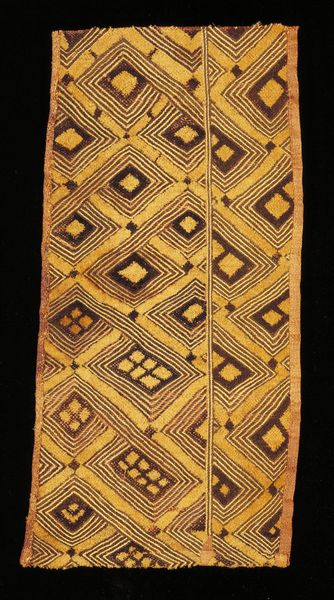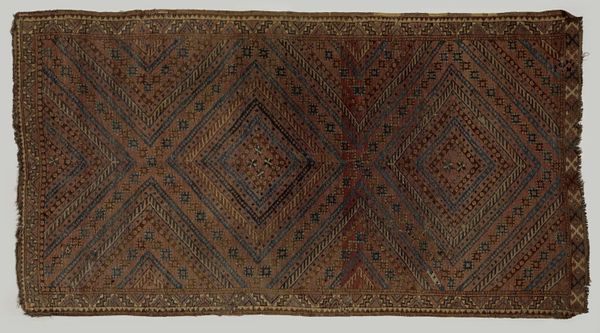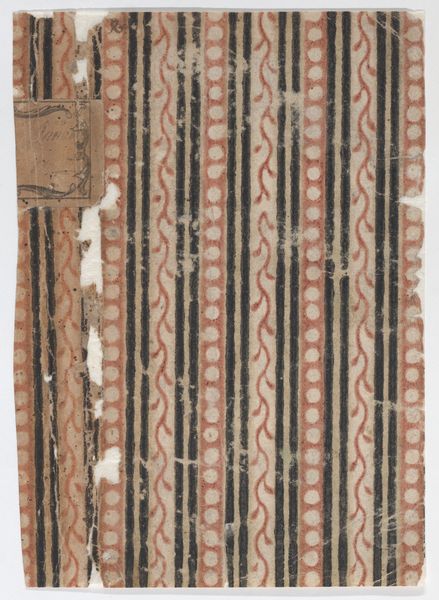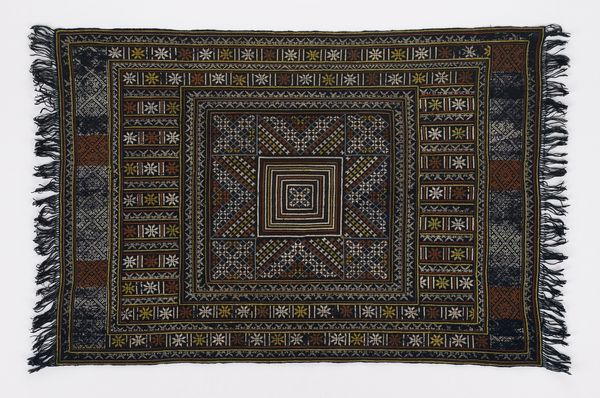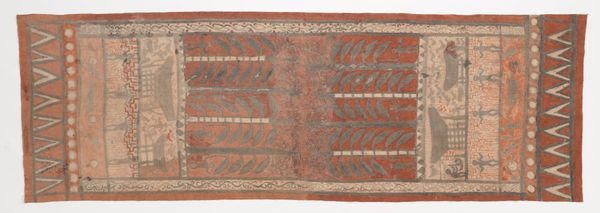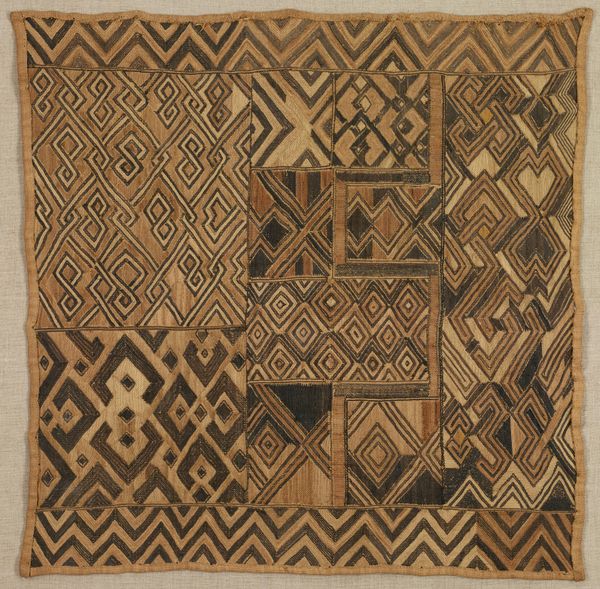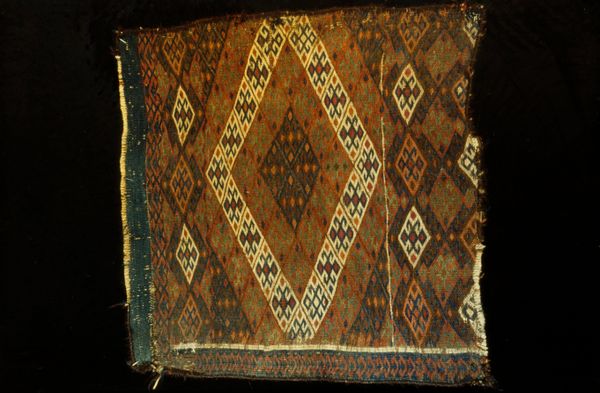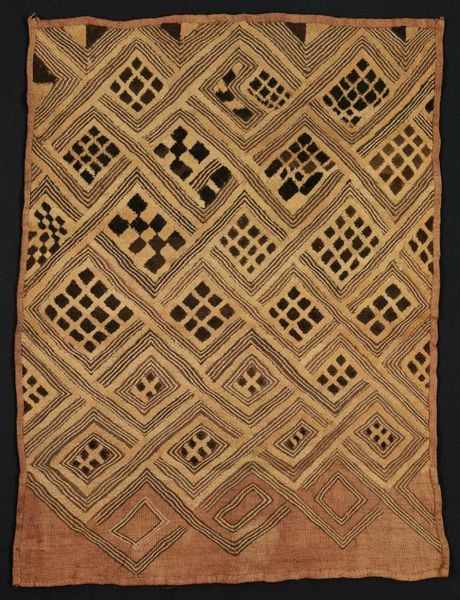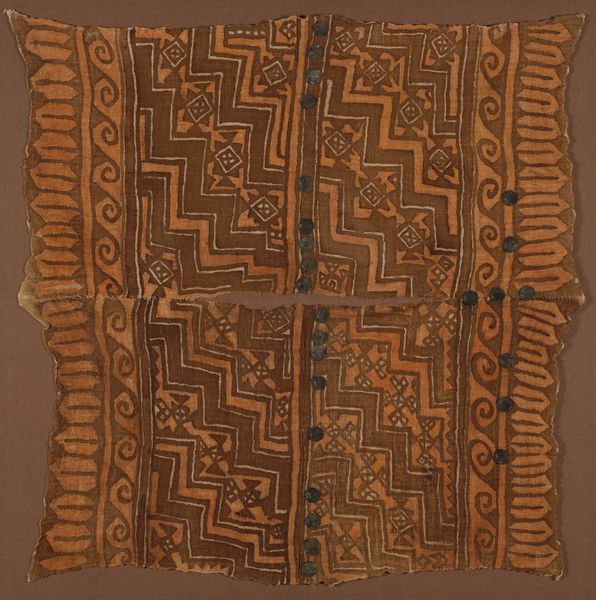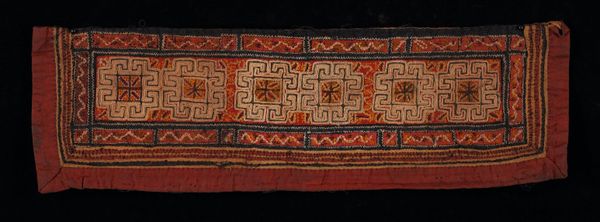
textile
#
african-art
#
natural stone pattern
#
naturalistic pattern
#
textile
#
geometric pattern
#
abstract pattern
#
repetitive shape and pattern
#
organic pattern
#
geometric
#
repetition of pattern
#
pattern repetition
#
layered pattern
#
organic texture
Dimensions: 287 11/16 x 18 3/4 in. (730.73 x 47.63 cm) (approximately)
Copyright: Public Domain
Editor: Here we have an intriguing textile piece, entitled "Coffin Screen," date unknown, currently housed here at the Minneapolis Institute of Art. It’s rendered in silk and cotton. The repeating geometric patterns, predominantly in earthy browns and blacks, give it a kind of solemn, almost meditative feel, and knowing it is associated with a coffin gives one pause. How do we contextualize an object like this, historically? Curator: That’s a keen observation. The patterns aren't merely decorative. What sociopolitical functions do textiles serve? Are these patterns aesthetic, a cultural language, perhaps both? How does the funerary context shape the production, viewing, and reception of the screen? Knowing that textiles in many cultures served as status symbols, are these fabrics used by a specific community? Editor: So, we’re thinking about it not just as art, but also as an object embedded in cultural practices? What is lost when something that functions within an indigenous tradition, such as a Coffin Screen, enters the museum world? Curator: Exactly. How does removing an item from its original cultural usage affect how it’s understood? A textile, in its original usage is often active. In the museum it's an object on display. That very presentation makes it a form of rhetoric, a statement by the museum, which itself wields political power. What kind of statement might a Coffin Screen on display in an art museum make to viewers? Editor: I see what you mean. Displaying this item really emphasizes that museums also have power over cultural heritage. Curator: Precisely. Hopefully a responsible museum is critically aware of its influence, using that power to help communicate diverse cultural views around life, death and artistic expression. Editor: It’s fascinating to think about how its meaning transforms in this new environment. Thanks!
Comments
No comments
Be the first to comment and join the conversation on the ultimate creative platform.
